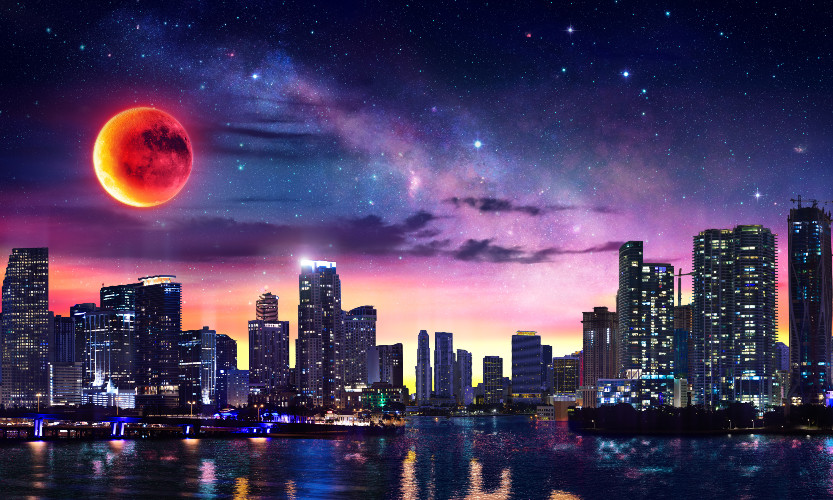Creating a believable urban fantasy society involves crafting a world where the magical and mundane coexist in a seamless and compelling way. A well-developed urban fantasy society enriches the narrative, providing a rich backdrop for characters and plot. This article explores key elements for designing a believable urban fantasy society, including magical integration, societal structures, and cultural norms.

Integrating Magic into Urban Society
Establish Rules and Limits for Magic
A believable urban fantasy society requires clear rules and limitations for magic. Define how magic works, its scope, and its limitations. Consider how magical abilities are acquired, used, and regulated. Establishing consistent rules helps avoid plot holes and ensures that magic serves the story’s needs without overwhelming the narrative.
Incorporate Magic into Daily Life
To create a believable urban fantasy society, integrate magic into everyday life. Show how magic affects daily routines, technology, and social interactions. For example, enchanted public transport, magical security systems, or spell-based healthcare can illustrate how magic is woven into the fabric of society. This integration enhances the world’s realism and immersion.
Establish Magical Hierarchies and Institutions
Develop institutions and hierarchies within the magical community to add depth to the society. Consider organizations like magical governments, secret societies, or guilds that manage magical affairs. These institutions can enforce laws, offer services, and create political intrigue. Establishing clear roles and structures within the magical society adds complexity and realism.
Building Societal Structures
Develop Social Hierarchies and Class Systems
Create social hierarchies and class systems that reflect the impact of magic on society. Determine how magical abilities influence social status, wealth, and power. For instance, powerful magic users might hold elite positions, while those with limited abilities could face discrimination. These social dynamics add depth and conflict to the narrative.
Establish Cultural Norms and Traditions
Define the cultural norms and traditions of your urban fantasy society. Explore how magic influences cultural practices, holidays, and rituals. For example, a society might celebrate magical achievements with festivals or observe rituals to honor magical ancestors. These cultural elements enrich the world and provide context for character behaviors and beliefs.
Create Economic and Political Systems
Develop economic and political systems that incorporate both magical and mundane elements. Consider how magic influences industries, trade, and commerce. For example, magical artifacts might be valuable commodities, or magical labor could impact employment markets. Politically, explore how magical entities influence governance and policy-making. A well-rounded economic and political framework enhances the society’s complexity.
Crafting Cultural and Social Norms
Define Attitudes Toward Magic
Explore how different segments of society view magic. Attitudes can range from reverence and awe to fear and hostility. Consider how these attitudes affect interactions between magical and non-magical individuals. For example, a society might have strict regulations on magic use, or there could be cultural taboos associated with certain magical practices.
Integrate Diversity and Subcultures
Include diversity and subcultures within your urban fantasy society. Different magical species, factions, or ethnic groups can contribute to a rich cultural tapestry. Explore how these groups interact, their distinct traditions, and their place within the larger society. This diversity adds depth and authenticity to the world.
Address Ethical and Moral Issues
Incorporate ethical and moral issues related to magic into your society. Consider dilemmas such as the use of magic for personal gain, the exploitation of magical beings, or the ethical implications of magical experimentation. Addressing these issues adds complexity to the narrative and provides opportunities for character development and conflict.
Enhancing World-Building
Show Impact on Urban Infrastructure
Demonstrate how magic influences urban infrastructure and design. For instance, magical wards might protect buildings, enchanted streetlights could illuminate the city, or magical portals might facilitate transportation. These elements should reflect the society’s integration of magic and contribute to the world’s visual and functional aspects.
Create Detailed Locations and Landmarks
Design detailed locations and landmarks that highlight the unique aspects of your urban fantasy society. Enchanted libraries, mystical marketplaces, or hidden magical neighborhoods can serve as important settings in your story. Providing rich descriptions and backstories for these locations enhances the world’s believability and engages readers.
Develop Historical Context
Include historical context to explain how the current state of the society came to be. Consider how past events, conflicts, or discoveries have shaped the present. This background provides depth and helps readers understand the societal dynamics and the evolution of magical and mundane elements.
Examples of Believable Urban Fantasy Societies
The Magical Underworld
In stories like “The Mortal Instruments” series by Cassandra Clare, the hidden magical underworld coexists with the mundane world, featuring intricate magical hierarchies, institutions, and cultural practices. The society includes diverse magical beings with distinct roles and traditions, enhancing the narrative’s depth and complexity.
Modern Witchcraft Communities
In “The Witches of East End” by Melissa de la Cruz, the magical community is integrated into contemporary life, with witches living alongside non-magical individuals. The story explores how magic affects daily life, societal norms, and personal relationships, creating a relatable and immersive world.
Magical Tech Worlds
In “The Iron Druid Chronicles” by Kevin Hearne, magic is combined with modern technology, creating a society where ancient magic and contemporary life intersect. The series showcases how technology influences magical practices and societal structures, adding a unique twist to urban fantasy world-building.
Conclusion
Creating a believable urban fantasy society involves integrating magic seamlessly into daily life, developing complex societal structures, and defining cultural norms and traditions. By incorporating clear rules for magic, establishing social hierarchies, and addressing ethical issues, authors can craft immersive and authentic worlds that captivate readers. A well-developed urban fantasy society enhances the narrative, providing a rich backdrop for characters and plot, and reflecting the interplay between the magical and mundane.

